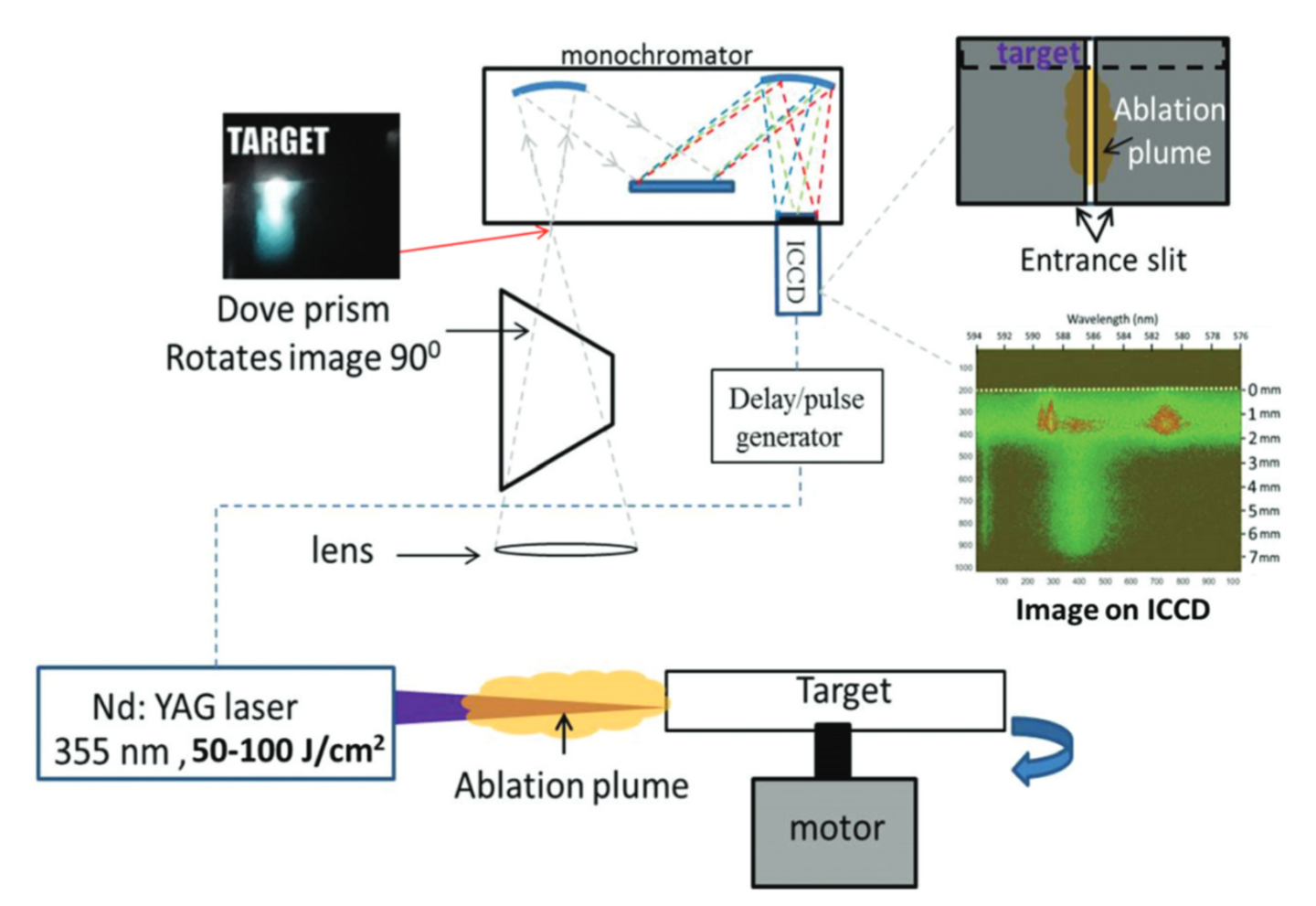Laser-Produced Plasmas
Plasma Sources Navigation
Laser-produced Plasmas
Laser ablation
The PPPL-LPN conducts laser vaporization experiments of graphite and boron targets using available ND:YAG pulsed laser (Powerlite 8020, pulse energy 300/550/1200 mJ for wavelengths 355/532/1064 nm, 10 ns, 20 Hz). In addition we have a capability to utilize any wavelength between 193-2450 nm using the Horizon optical parametric oscillator (OPO) pumped with Powerlite with energy per pulse depending on wavelength and ranging between 1 mJ to ~ 20 mJ. The ablation experiments typically conducted in a 6-way cross chamber to control the gas pressure and allowing ample optical access for diagnostics. The target can be be mounted on a rapidly rotating holder to prevent laser “dipping”. Inside the chamber we mount various “collectors” and “witness plates” to collect ablated and\or synthesized material for ex situ analysis. Various in situ diagnostics are offered for application, such as optical emission spectroscopy for species identification and plasma characterization, laser induced fluorescence for measuring\detecting various atomic and molecular species, and laser induced breakdown spectroscopy and incandescence for detecting particles, imaging particle conglomeration areas, and measuring particle size distribution.

Figure 1. Experimental setup for the optical emission spectroscopy study of laser ablation of B and BN targets1.
- S. Yatom and Y. Raitses, Characterization of Plasma and Gas-Phase Chemistry during Boron-Nitride Nanomaterial Synthesis by Laser-Ablation of Boron-Rich Targets 22, 20837 (2020).
 This capability is located at the Princeton Plasma Physics Laboratory.
This capability is located at the Princeton Plasma Physics Laboratory.
